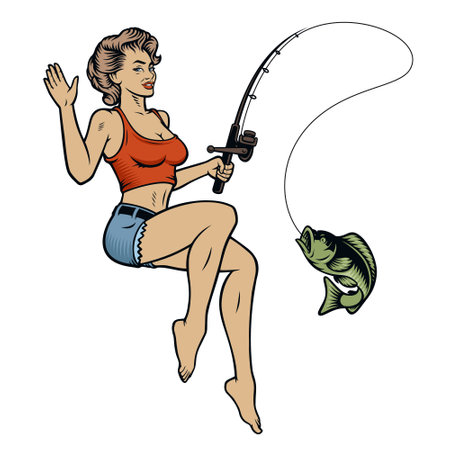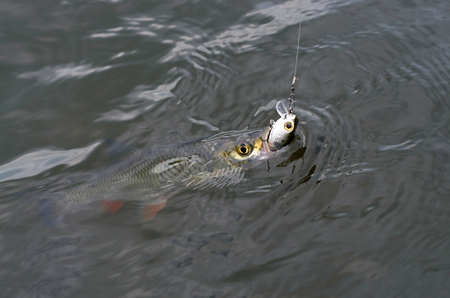1. Introduction to U.S. Fishing Regulations
Fishing in the United States is a popular outdoor activity enjoyed by millions, whether its casting a line in a quiet mountain stream or heading offshore for big game fish. But before you grab your rod and reel, it’s important to understand that fishing is regulated at both the federal and state levels. These rules aren’t just red tape—they play a vital role in protecting fish populations and ensuring our waters remain healthy and productive for future generations.
Why Are Fishing Regulations Important?
Fishing regulations are designed to promote conservation and sustainable management of fishery resources. Without these rules, overfishing could lead to depleted fish stocks, damaged ecosystems, and loss of recreational and commercial fishing opportunities. By setting limits on when, where, and how you can fish, these regulations help keep fish populations stable and healthy.
Federal vs. State Responsibilities
In the U.S., fishing laws are shared between federal and state governments. Understanding who regulates what can help you stay compliant and avoid fines.
| Authority | Main Responsibilities | Where Rules Apply |
|---|---|---|
| Federal Government | Manages fisheries in federal waters (3–200 nautical miles offshore), protects endangered species, sets national policies | Offshore/ocean fishing beyond 3 miles (Atlantic, Gulf) or beyond 9 miles (Pacific, Texas & Florida Gulf Coast) |
| State Governments | Regulate freshwater fishing, manage nearshore marine fisheries, issue licenses, set daily catch limits | Lakes, rivers, streams, ponds; coastal waters up to 3 or 9 nautical miles depending on location |
Quick Tip:
If youre fishing close to shore or in freshwater (like lakes or rivers), you’ll likely need to follow your state’s rules. If youre heading out to sea beyond state waters, be sure to check federal regulations too.
The Role of Conservation and Sustainability
Both federal and state agencies work together to ensure that fishing remains a sustainable activity. This includes using scientific research to set catch limits, establishing closed seasons during spawning periods, protecting critical habitats, and monitoring fish populations over time.
Examples of Conservation Tools Used:
- Size Limits: Prevent harvesting of juvenile or breeding-size fish
- Crew Limits: Control how many fish each angler can keep per trip
- Seasonal Closures: Protect fish during spawning or migration periods
- No-Take Zones: Areas where fishing is completely prohibited to protect habitats
By following both federal and state guidelines, anglers help preserve America’s rich fishing heritage while ensuring that future generations can enjoy the same experiences on the water.
2. What Are Federal Fishing Regulations?
When it comes to fishing in the United States, its important to understand the difference between federal and state regulations. Federal fishing regulations apply to waters that are under national jurisdiction—primarily marine waters that stretch from 3 to 200 nautical miles offshore. These are often referred to as the Exclusive Economic Zone (EEZ). In addition, federal laws may also govern fish species that migrate across state lines or are part of interstate commerce.
Who Sets Federal Fishing Rules?
The primary agency responsible for creating and enforcing federal fishing regulations is NOAA Fisheries, also known as the National Marine Fisheries Service (NMFS). This agency operates under the U.S. Department of Commerce and works with regional councils to manage fish stocks sustainably and prevent overfishing.
Key Responsibilities of NOAA Fisheries:
- Managing fisheries in federal waters
- Protecting endangered marine species
- Conducting scientific research on fish populations
- Issuing permits for commercial and recreational fishing
Federal vs. State Jurisdiction
To better understand where federal laws apply, heres a quick breakdown of how U.S. waters are divided:
| Jurisdiction | Water Range | Managed By |
|---|---|---|
| State Waters | 0 to 3 nautical miles from shore (up to 9 miles in Texas and Florida Gulf Coast) | Individual State Fish & Wildlife Agencies |
| Federal Waters (EEZ) | 3 to 200 nautical miles from shore | NOAA Fisheries and Regional Fishery Management Councils |
Why Do Federal Regulations Matter?
If you’re planning a deep-sea fishing trip or targeting species like tuna, swordfish, or snapper, chances are you’ll be fishing in federal waters. Following federal rules ensures youre not only staying legal but also helping protect fish populations for future generations.
Tip for Anglers:
Before heading out, check both federal and state regulations—especially if your trip crosses into federal waters. The rules can differ significantly depending on location, season, and species.

3. Understanding State-Level Fishing Rules
When it comes to fishing in the U.S., each state has its own set of rules for managing inland and nearshore waters. These state-level regulations are designed to protect local fish populations, ensure sustainable fishing, and provide a fair experience for everyone who enjoys the sport. Heres a breakdown of how states typically manage their fishing regulations:
Licensing Requirements
Most states require anglers to have a valid fishing license before casting a line. These licenses can vary depending on your residency status (resident or non-resident), age, and the type of water you’re fishing in (freshwater or saltwater). Some states also offer short-term licenses for visitors or weekend trips.
| License Type | Description |
|---|---|
| Resident License | For individuals who live in the state permanently |
| Non-Resident License | For out-of-state visitors |
| Youth/Junior License | Usually required for children above a certain age (varies by state) |
| Senior License | Often discounted for older adults |
| Short-Term Passes | 1-day or 7-day options for tourists or casual anglers |
Catch Limits and Size Regulations
Catch limits help prevent overfishing by controlling how many fish you can keep per day. In addition to daily bag limits, most states enforce size limits that specify the minimum or maximum length a fish must be to legally keep it. These rules can vary greatly from species to species and even from one lake or river to another within the same state.
Why It Matters:
- Sustainability: Helps maintain healthy fish populations for future generations.
- Biodiversity: Protects vulnerable species during critical growth stages.
- User Fairness: Ensures no single angler depletes resources unfairly.
Seasonal Restrictions
Certain times of year are off-limits for specific species due to spawning seasons or conservation efforts. These closed seasons allow fish populations to reproduce without disturbance, ensuring stronger numbers when the season reopens. Always check your state’s seasonal calendar before planning your trip.
A Few Common Examples:
- Bass: Closed during spring in some states due to spawning.
- Salmons & Trouts: May have fall restrictions based on migration patterns.
- Icy Waters: Ice fishing may have separate dates and gear rules.
In the U.S., fishing regulations are enforced by both federal and state agencies. Sometimes, these rules overlap—especially in coastal waters or areas where federal and state jurisdictions meet. Understanding how these regulations interact can help anglers avoid unintentional violations.
Understanding Jurisdiction Boundaries
Generally, state laws apply to inland waters like lakes, rivers, and streams within a state’s borders. Federal regulations cover ocean waters beyond the state-controlled zones. Heres a simple breakdown:
| Water Type | Jurisdiction | Regulating Body |
|---|---|---|
| Inland Waters (lakes, rivers) | State | State Fish & Wildlife Departments |
| Coastal Waters (0-3 miles offshore) | State | State Agencies |
| Federal Waters (3-200 miles offshore) | Federal | NOAA Fisheries |
Navigating Conflicting Regulations
There are times when both federal and state rules apply in the same area. This is common in nearshore saltwater fishing. For example, a particular species might be legal to catch under state law but restricted federally—or vice versa.
Example:
If youre fishing for red snapper off the coast of Florida, you might find that federal season dates differ from the states. In this case, if youre fishing in federal waters, you must follow federal rules—even if your boat launches from a state-controlled marina.
How to Stay Compliant
The best way to stay on the right side of the law is to do a bit of homework before your trip:
- Know where you’re fishing: Are you in state or federal waters?
- Check both sets of rules: Visit your state fish and wildlife website and NOAA Fisheries for updates.
- Use reliable apps or guides: Many mobile apps provide real-time regulation info based on GPS location.
- When in doubt, follow the stricter rule: If regulations conflict, following the more conservative limit usually keeps you safe.
Helpful Resources:
- NOAA Fisheries Website
- U.S. Fish & Wildlife Service Fishing Info
- Take Me Fishing – Regulation Tools by State
By understanding how federal and state rules overlap and interact, youll not only protect fish populations but also enjoy peace of mind while casting your line.
5. Tips for Staying Legal While Fishing
Fishing in the U.S. can be a great way to relax and enjoy nature, but it’s important to follow both federal and state regulations to avoid fines or penalties. Here are some practical tips to help you stay on the right side of the law no matter where youre casting your line.
Do Your Homework Before You Go
Rules can vary widely depending on whether you’re fishing in freshwater or saltwater, or even from one state to another. Before heading out, check the latest regulations for the specific location where you plan to fish. Many states have their own fish and wildlife departments that provide updated information online.
Useful Resources by Jurisdiction
| Jurisdiction | Official Resource |
|---|---|
| Federal Waters (3–200 miles offshore) | NOAA Fisheries |
| State Waters (inland + 0–3 miles offshore) | Check your state’s fish & wildlife website (e.g., California, Florida) |
| Tribal Lands | Contact the local tribe directly for permits and rules |
Understand Regional Differences
The same species might have different size limits, bag limits, or open seasons depending on where you’re fishing. For example, striped bass may have separate rules in the Atlantic coast versus inland lakes. Always double-check local laws—even within the same state—if youre moving between regions.
Use Mobile Apps and Maps
A number of states offer free mobile apps that include maps, season dates, catch limits, and licensing info. Some even allow you to report catches or buy licenses directly through the app.
Popular State Fishing Apps:
- Tennessee: TWRA On The Go
- Texas: Texas Outdoor Annual App
- Maine: Go Outdoors Maine
- Florida: Fish|Hunt FL App
Keep Your License Handy
You’ll need a valid fishing license for most recreational fishing in the U.S., whether issued by a state or required federally (for some saltwater fishing). Make sure its current, and carry a physical or digital copy with you while fishing.
If In Doubt, Ask!
If youre unsure about a regulation—like whether a particular area requires a special permit or if theres a seasonal closure—contact local authorities or park rangers. It’s always better to ask than risk getting fined.
Stay Updated on Changes
Laws can change yearly—or even mid-season—especially when fish populations are at risk. Subscribe to updates from official agencies or sign up for newsletters so you don’t miss any changes that could affect your next trip.
The bottom line: know before you go. Taking a few minutes to research can save you trouble and keep our fisheries healthy for generations to come.

